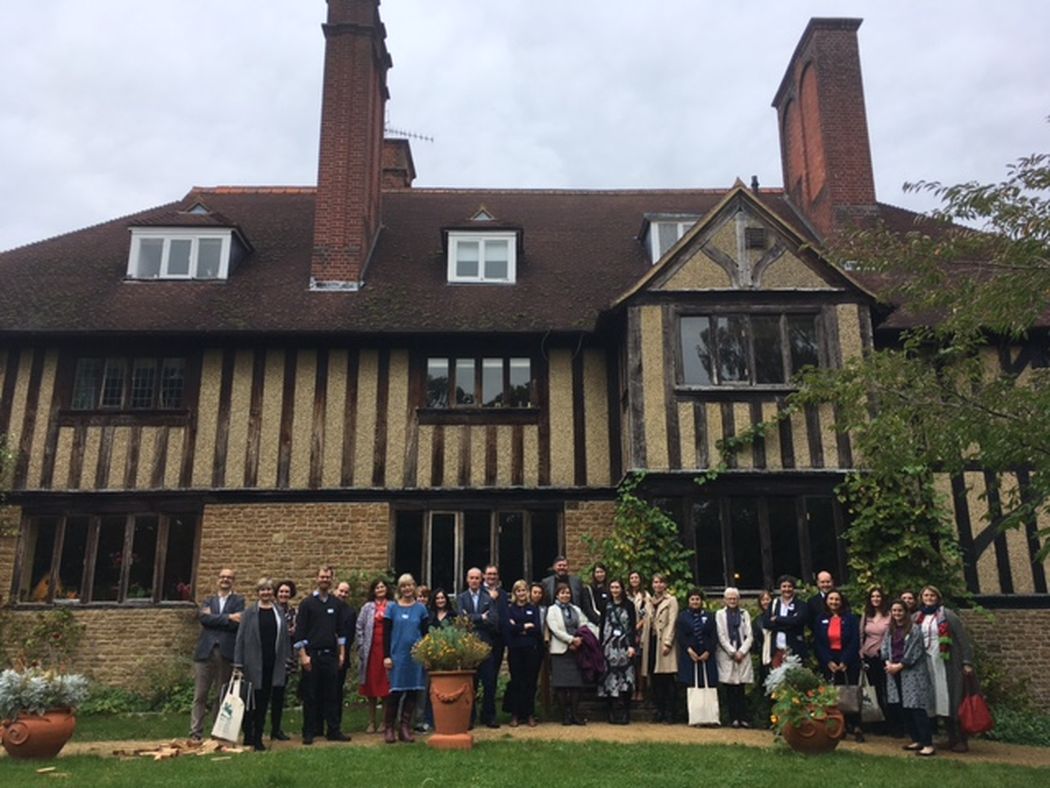Taking the network forward
Looking forward - the future of the Artist's Studio Museum Network
On 25 September, 2017, Watts Gallery welcomed 25 curators and museum directors from as far afield as Iceland, Russia and Spain, for a one-day event to discuss the future of the Artist's Studio Museum Network, set up and managed by Watts Gallery-Artists' Village.
The Artist's Studio Museum Network was established in early 2016, in the consciousness that there are hundreds of museums across the world that—like Watts Gallery—are established in the former homes or studios of visual artists. Many of them are small and out-of-the-way (artists often seeking seclusion in which to work), but together 'artist's studio museums' are a group of uniquely charismatic spaces, each with their own stories to tell.
When we set the Network up, we decided to start with Europe. With financial support from the Tavalozza Foundation and Heritage Lottery Fund, we have now gathered over 125 European studio museums together on the website www.artiststudiomuseum.org. Twenty-one countries are represented, with museums to discover everywhere from bustling city centres like Amsterdam, Berlin and Moscow, to rural farmland and forests in Norway and the Netherlands. The oldest studio museum in the network is Dürer's House, Nuremberg, built around 1420. Meanwhile, in Lisbon, the Atelier-Museo Júlio Pomar still provides studio space to Pomar (born 1926), Portugal's oldest living artist.

Delegates from across the Artist's Studio Museum Network outside Limnerslease, the former home of G. F. Watts
The colloquium event in September was an opportunity to bring the curators of some of these museums together 'offline', to meet face to face, and discuss potential projects and collaborations. Delegates attended from the Johannes Larsen Museum, Denmark, where Larsen, famed for his pictures of birds and landscape, established a family home and artists' colony; from Iceland's first purpose-built art gallery, the Einar Jónsson Museum, Reykjavík; from Polenovo, Russian retreat of landscape painter Vasily Polenov, and from the Museo Sorolla, Spain, where Watts's near-contemporary, Joaquín Sorolla, kept his most personal paintings of his family, along with a collection of nearly a thousand objects.
Paris's particularly rich collection of studio museums was also well represented, with delegates attending from the Musée National Eugène Delacroix, the Musée de la vie Romantique (former home of Ary Scheffer) and the Musée Bourdelle, a rare example of a surviving nineteenth-century sculptor's studio. UK museums included Leighton House, London; the UK-wide National Trust, and by four relatively newly established studio museums: the Sidney Nolan Trust, David Parr House, Turner's House, and Dorich House Museum, as well as longer-standing ones—the Munnings Art Museum, Dedham, the Henry Moore Foundation, Perry Green, and Charleston, Sussex.
As guests walked around the Artists' Village and had a Director's Tour of Watts Gallery's current exhibition, 'England's Michelangelo', they were able to talk, network, and establish points of connection with their own collections. Key themes for collaboration included the possibility of working together on exhibitions, an opportunity to put beloved national artists in new international contexts (building on the success of Watts Gallery's 2014 exhibition on the Art and Craft of Elena Polenova). However, shared marketing strategies and approaches to interpretation and collections care also formed an important point of discussion, and it is our hope that, as the Network grows, it will become an invaluable source of mutual support and development for small museums across the world.
